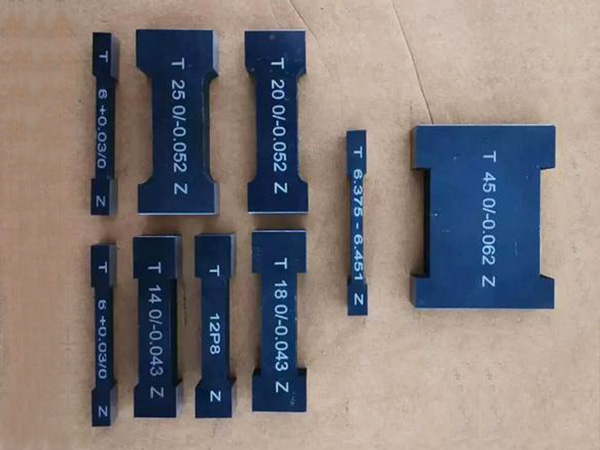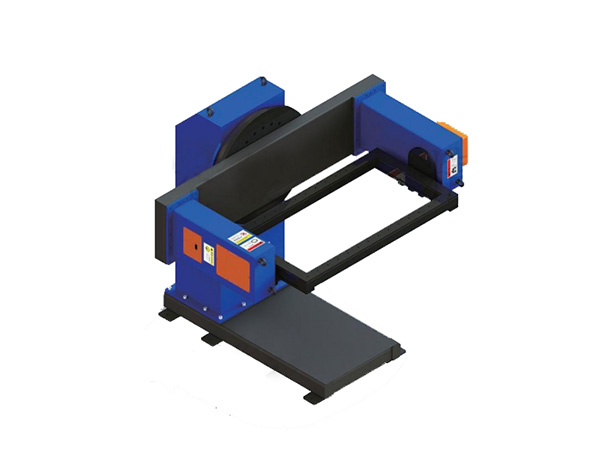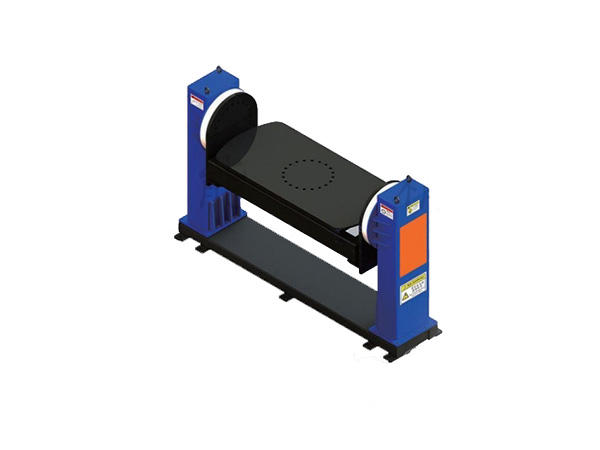- Navigation -
NEWS DETAILS
NEWS INFORMATION
Strategies to Reduce Defects in Machine Tool Castings Manufacturing
AUTHOR:Bozhong Tool DATE:2025-10-20 19:08:54 HITS:107
The precision and reliability of Machine tool castings define the overall quality of industrial machinery. As the structural foundation for CNC systems, milling machines, and lathes, these castings must meet tight dimensional tolerances and withstand continuous stress and vibration.
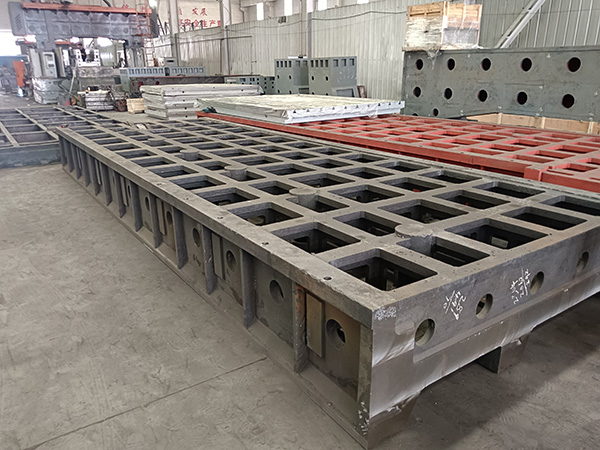

However, even minor casting defects—such as porosity, shrinkage, or cracks—can compromise performance and durability. To guarantee defect-free production, manufacturers must focus on systematic prevention rather than reactive correction. This article explains practical strategies to achieve stable, high-quality Machine tool castings, especially when sourced from a China manufacturer offering bulk supply for industrial clients.
1. Common Defects in Machine Tool Castings
Defects in Machine tool castings typically arise during melting, molding, or solidification. Understanding these root causes is key to preventing recurrence.
·Gas porosity: Occurs when gases become trapped during pouring or solidification.
·Shrinkage cavities: Result from insufficient feeding during metal cooling.
·Inclusions and slag: Introduced from contaminated charge materials or improper melt handling.
·Cracks and warping: Often linked to uneven cooling or internal stress.
·Cold shuts: Created when metal fronts fail to fuse properly inside the mold.
Each type requires specific metallurgical and process control solutions to eliminate the problem at its origin.
2. Mold Design and Gating Optimization
A sound mold design is fundamental to producing stable Machine tool castings. The gating system determines how molten metal enters the cavity, influencing flow, temperature, and solidification.
·Smooth metal flow: Avoid turbulence to prevent gas entrapment.
·Balanced gating ratio: Maintain uniform metal velocity across sections.
·Proper riser placement: Compensates for metal shrinkage as the casting cools.
·Chills and insulation: Used strategically to balance temperature gradients.
·Vent design: Adequate air escape prevents blowholes.
Modern foundries rely on simulation tools (such as MAGMA or ProCAST) to digitally analyze mold filling, predict hot spots, and optimize gating before production begins. Many China manufacturers specializing in bulk supply of machine tool castings apply these simulations to ensure defect prevention during design.
3. Material Selection and Melt Control
The chemical composition of molten metal directly affects casting soundness. Consistent melt quality is achieved through:
·Using high-grade pig iron or steel scrap with minimal impurities.
·Desulfurization and deoxidation treatments using silicon or aluminum.
·Continuous temperature control during melting to prevent oxidation and segregation.
·Filtration systems to remove non-metallic inclusions.
Advanced spectrometers now enable real-time chemical analysis, allowing China manufacturers to maintain stable compositions across large-scale bulk supply operations.

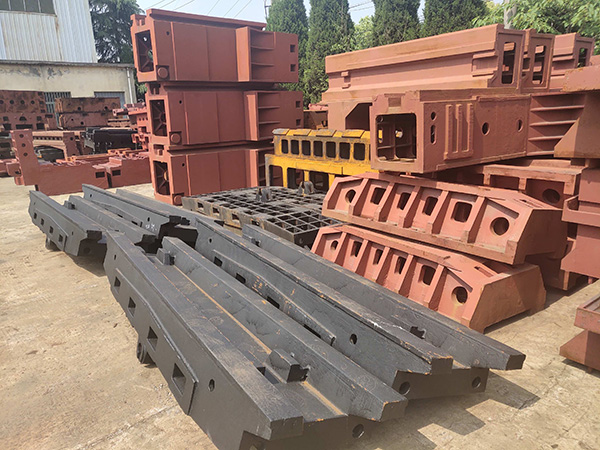
4. Temperature and Cooling Management
Temperature uniformity is vital for avoiding thermal stress and structural defects in Machine tool castings.
·Controlled pouring temperature: Too high increases oxidation; too low causes cold shuts.
·Preheated molds: Reduce thermal shock and uneven solidification.
·Uniform cooling: Prevents distortion and cracking.
·Use of chill blocks: Enhances solidification in thick sections to prevent shrinkage cavities.
Properly controlled thermal cycles not only improve metallurgical bonding but also enhance dimensional accuracy for machined surfaces.
5. Sand System Stability and Mold Integrity
In sand casting, mold quality determines surface finish and dimensional precision. Poor sand control is a frequent source of recurring defects.
·Consistent grain size distribution: Ensures a smooth surface without losing permeability.
·Accurate binder and additive ratios: Prevents excessive gas evolution.
·Moisture control: Keeps mold strength stable.
·Proper ramming and compaction: Eliminates weak zones that may cause distortion.
Automated sand mixing and real-time moisture monitoring systems—commonly adopted by high-end China manufacturers—ensure uniformity across every batch in bulk supply production.
6. Inspection and Non-Destructive Testing
Defect detection must occur before machining, when corrections are still cost-effective.
Common testing methods include:
·Ultrasonic testing (UT): Identifies internal voids and porosity.
·Radiographic inspection (X-ray): Detects shrinkage and inclusion clusters.
·Magnetic particle testing (MT): Reveals surface and near-surface cracks.
·3D scanning: Validates casting geometry against CAD specifications.
Factories offering bulk supply of Machine tool castings often integrate these methods with digital inspection systems for 90% traceable quality control.
7. Process Documentation and Continuous Improvement
Consistency is achieved through standardized operations and data-driven management.
Key practices include:
·Statistical Process Control (SPC): Tracks dimensional trends and rejects abnormal deviations.
·Failure Mode and Effects Analysis (FMEA): Identifies potential weak points in casting design or process flow.
·Six Sigma and Kaizen programs: Encourage defect elimination through incremental process refinement.
These systems are especially important in large-scale production environments typical of China manufacturers providing bulk supply to international OEM clients.
8. Partnering with Reliable China Manufacturers
Collaborating with an experienced China manufacturer ensures a steady flow of precision Machine tool castings backed by engineering support and process transparency.
Key advantages:
·High-capacity bulk supply for global demand.
·In-house machining and surface treatment.
·ISO-certified quality systems.
·Advanced casting simulation and thermal analysis.
·Third-party inspection reports available for each shipment.
By sourcing directly from established Chinese foundries, customers benefit from cost savings, consistent quality, and customizable production flexibility.
Conclusion
Defect reduction in Machine tool castings production demands meticulous control at every stage—from raw material selection to final inspection. Through optimized gating design, precise temperature regulation, and rigorous testing, manufacturers can achieve stable casting integrity and superior surface quality.
When these best practices are combined with the large-scale production capability of a China manufacturer offering bulk supply, the result is consistent, defect-free castings that form the backbone of high-performance machine tools worldwide.
References
GB/T 7714:Górny M, Kawalec M, Gracz B, et al. Influence of cooling rate on microstructure formation of Si–Mo ductile iron castings[J]. Metals, 2021, 11(10): 1634.
MLA:Górny, Marcin, et al. "Influence of cooling rate on microstructure formation of Si–Mo ductile iron castings." Metals 11.10 (2021): 1634.
APA:Górny, M., Kawalec, M., Gracz, B., & Tupaj, M. (2021). Influence of cooling rate on microstructure formation of Si–Mo ductile iron castings. Metals, 11(10), 1634.
-
How to Choose the Right Size of Cast Iron Surface Plate for Your Work
-
Is Upgrading Your Welding Table a Worthwhile Investment?
-
Strategies to Reduce Defects in Machine Tool Castings Manufacturing
-
Why Cast Iron Surface Plates Remain the Benchmark in Precision Engineering
-
Essential Safety Guidelines for Operating a Welding Table
-
Key 2025 Developments Driving the Future of Machine Tool Castings
Botou Bozhong Precision Machine Tool Co., Ltd.
Copyright © 2025-2026 https://www.bozhong-weldingtable.com. All Rights Reserved Botou Bozhong Precision Machine Tool Co., Ltd.Copyright





 Current Location:
Current Location: